Practice makes perfect

California Offshore Race Week
The past week turned out to be the best preparation for Pacific Cup we could hope for. It all started with a 1,700 mile drive to get Spadefoot from Austin, TX to Richmond, CA. Chris also drove 900 miles from Bellingham, WA to Richmond to bring several important items from Shearwater down to Spadefoot. Boat and crew were fully reunited on Wednesday.
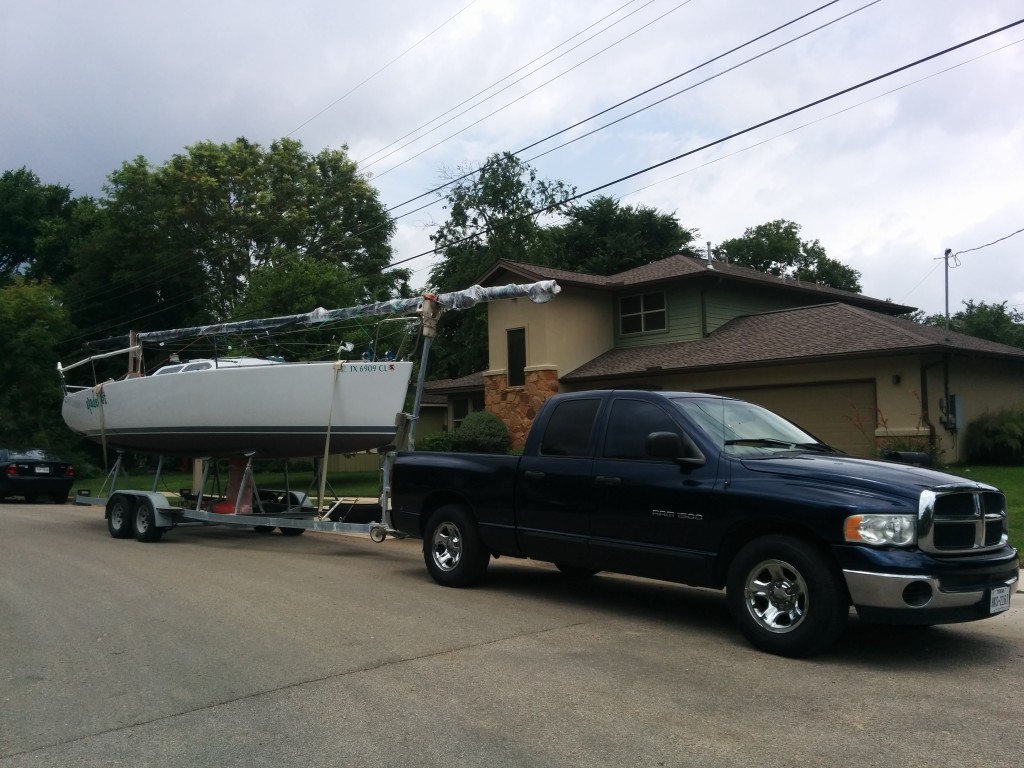
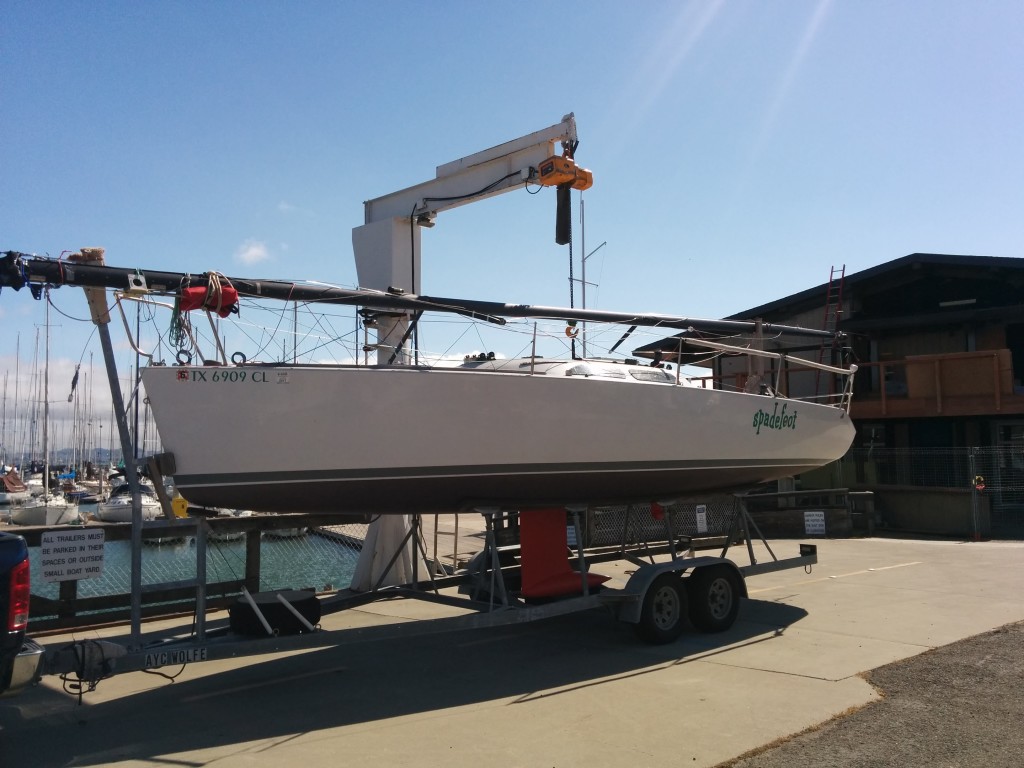
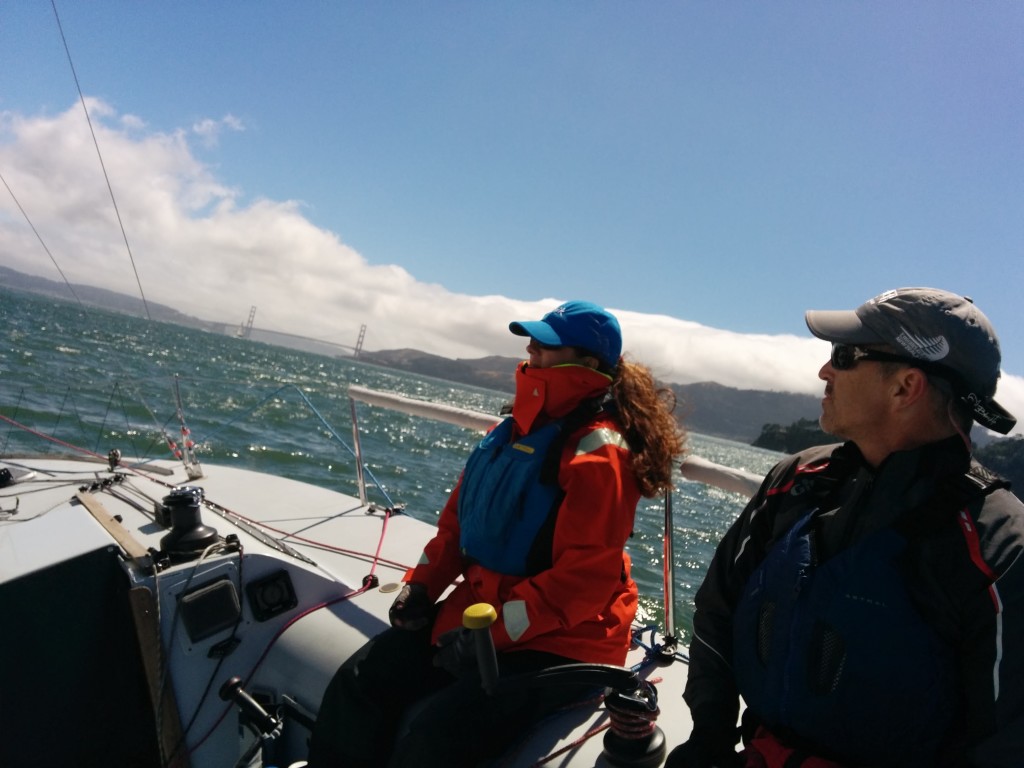
On Thursday, we had Spadefoot measured and weighed to get a certified rating for Pacific Cup. Not surprisingly, Spadefoot came in 50 pounds heavier than what we submitted in March (3,364 pounds) and the waterline was a few inches longer than what we submitted (24.8 feet). Heavier boat, slower rating, right? Of course not. The slightly longer waterline more than offset the increase in weight and our rating dropped from 574 to 571. Oof. Fortunately, we have a fix for that. More on that later.
After the weigh-in we had our Pac Cup safety inspection. Only one minor issue. Somehow I misread the requirements and determined our second bilge pump could be electric. Not so. Two manual bilge pumps are required. Easy fix and other than that, we had no issues. The inspector even said “The best prepared for inspection and the fastest inspection ever.” Not bad for a couple having to make preparations from Texas!
With all the logistics behind us, the fun part started on Friday with Spinnaker Cup from San Francisco to Monterey (about 90 miles). Turnout for the race was fantastic with 60 or so boats starting. We had 16 boats in our division, too. The start was a nice beat out through Golden Gate to the ocean. Spadefoot proved we could go upwind quite well against similar sized boats mostly because we can point really, really well. We started directly behind an Olson 30 and easily climbed up and over them. Once out to the ocean, the breeze eased off while the incoming tide increased. We struggled a bit to break free of the bay while the Olson and Express 27’s started moving well against us by switching to their genoas. Fortunately, it didn’t take long before the breeze came back, and we were able to switch to the A2 spinnaker. We spent the next 5 hours or so bombing along on starboard, straight down the coast with the breeze slowly increasing to the low 20’s, and our boat speed inching up to the mid-teens with a top speed of 18.0 knots. To add to the excitement, we snagged a crab pot on the keel which brought the boat gently to a complete stop before the line slipped off. This happened again a few hours later when we snagged a line with no marker buoy. That wasn’t nearly as exciting, though, as almost hitting a whale. We’d seen a couple of whale spouts close by, but nothing we needed to take action on, until a whale surfaced about 50 feet in front of us coming straight at us! We had to carve up really high with the kite to avoid smacking the whale on the forehead, but also managed to avoid a roundup and total loss of control. I could see right down the whale’s blowholes! Wild…!
With 7 miles to go, we heard the J/88 that owes us 13 seconds/mile transmit their 2 mile to go check-in over the VHF and felt like we were having a good race. The breeze was starting to ease, but we were still moving along nicely figuring we had about an hour to go. Not so fast. We made our 2 mile check-in, caught sight of the Express 37 we’d crossed hours earlier outside Monterey Bay, and then, the breeze shut off. It took us two hours to go the last 2 miles. We crossed the line going 0.0 knots through the water thanks to the incoming tide. A minor bummer in what was otherwise a great race. Still we finished 8th out of 15 in our class which seems pretty okay given our lack of experience in ocean conditions on Spadefoot, our aggressive rating, and the wind dying at the end. More importantly, our speed through the water compared to boats we care about seemed quite good. Surprisingly good, actually.
We didn’t hit the hay until 2am Saturday morning. That was fine because Saturday was going to be a lazy day of resting and tidying up the boat. Spadefoot was on the main dock right near the entrance which turned out to be quite fun, because lots of people walking by were interested in Spadefoot. They’d never seen a boat like it, and yet it has similar lines to several boats that are common on the West Coast (Express 27 and Synergy 1000, also Carl Schumacher designs). It made for some nice conversations.
Sunday was race day #2. Coastal Cup from Monterey to Santa Barbara, around 204nm. This time we were racing with only 3 onboard (Rachel, Oren, and I) as poor Chris had to present at conference in Quebec, Canada on Tuesday morning, which meant she needed to fly out on Monday well before we could finish a 200nm race. For Coastal Cup, we were in the little boat class with three Moore 24’s, two Express 27’s, and a J/88. We nailed the start and immediately tacked to easily port tack the fleet. Unfortunately, the wind shut off right then, and we spent the next 10 minutes barely moving. They even delayed the start of the second division to allow us time to get out of the way of the start line. Boo. So much for our head start. It turns out, in light air the Moore’s and Express’s with their genoas can kick our butt upwind, but once the breeze gets above about 5 knots Spadefoot starts moving, pointing well, and making up ground. Coastal Cup is known for being a fast run down the coast, so it was a little disheartening to turn the corner at Point Pinos, start heading south, and then find ourselves tacking into a 10 knot southwesterly. Yuck. It did give us a chance to watch all the bigger faster boats from the classes that started behind us to go rolling by. Most impressive was the Mod 70 trimaran, Orion, traveling at 3 times our boat speed.
By late afternoon we were able to switch first to the Code 0 as the breeze clocked aft and then finally the A2. Once we had the A2 up, we settled into a long run south, slowly separating from the coast. We did see Big Sur during the daylight, but fortunately, we were several miles off the coast, as several boats were parked in no wind closer to the shore. Short of the layline to Point Conception and not wanting to overstand and sail extra miles, we gybed towards the coast and crossed an Express 37 we’d last seen 6 hours earlier before nightfall. A good sign. Not long after, just before the sun came up, we were happy to see the J/88. That was really a good sign for us as the J/88 is well sailed and owes us time. We followed the J/88 towards Point Conception for several hours as the breeze slowly eased and then died completely. This was definitely not the highlight of the race as we bobbed around for about 6 hours before seeing the Express 37 sneak past us further south in some breeze, followed by another boat that sailed right up behind us only to gybe away to the south and sail around us, too. We scrambled to get moving south to catch the new ride towards Santa Barbara Channel.
By 5pm on Monday, the breeze was fully back, and we were ripping along in flat water between Point Arguello and Point Conception. Speeds were in the mid-teens, and it was some of the easiest sailing I’ve ever done. With the steady breeze and flat water, the boat needed nothing. All we had to do was point it in the direction we wanted to go and enjoy the ride. We started making nice gains on the two boats in front of us, while also starting to see the breeze tick up to 25 knots occasionally. Expecting the breeze might continue to build we switched down to our lovely A4. The A4 is slightly smaller, heavier, and best of all, it allows us to sail deeper with a wider groove. Once again we were gaining rapidly on the two boats in front of us, and then we decided to take a gybe further out into the channel. I’m not exactly sure what happened, but I’m pretty sure it was driver error. We wiped out so fast that the boat was almost immediately pointing upwind with the kite streaming back along the deck. It seemed like a dire moment, but a quick ease of the main, and spin sheets, a tug on the tiller and we were immediately back on track and lit up again, smoking out into the middle of the channel. The breeze did continue to build. The first time we saw 30 knots was an entirely new experience. Spadefoot was literally roaring through the water with speeds in the high teens. We would starting accelerating down one wave and when we reached the bottom we’d just keep on going. We’d plow into the backside of the next wave, but with such speed that we just burst through the wave, a small wall of water rushing back across with the deck before climbing over the back of that wave and flying down its face. It was possibly the best sailing I’ve ever experienced, and Spadefoot handled the conditions so, so well. The boat’s performance provided quite the confidence boost for Pac Cup which starts on July 12th.
Just before the sunset, we saw 36 knots of wind. Spadefoot was fully launched, practically skipping across the water now. We topped out at 21.2 knots of boat speed. We were completely in control, but it was still mildly terrifying as it seemed any second we would plow into a wave too hard, slow too much, and next wave would cause us to wipe out. Somehow it didn’t happen, but as we approached the time to gybe for the finish, we had to make a decision. Risk gybing, wiping out again, and breaking something, or take down the kite and risk it hitting the water and getting pulled overboard, or just keep sailing really fast towards LA. As it was getting dark, we felt we needed to choose one of those options sooner rather than later. Our eyes were glued on the wind speed readout, waiting for a light spot to either gybe or douse. When the wind dropped briefly below 20 knots, we quickly went for a douse. That turned out to be uneventful, with major high fives all round. For us, it was mission accomplished. We hadn’t quite reached the finish, but we’d proved we could go really fast and not crash, and we didn’t break anything. Watching the Yellow Brick Tracker later, it was clear we had some of the strongest breeze and fastest speeds in Santa Barbara (SB) Channel of any of the boats in the fleet. We were fortunate to be in the right place at the right time, and it turned out to be a ride I won’t soon forget.
As it happened, we chicken gybed with just the main up and started sailing straight to the finish, about 15 miles away. We were still seeing 12 knots on a few big surfs down the waves, but were averaging only 6 or 7 knots. 3 miles from the finish the breeze really started to ease, so we somewhat reluctantly, but not feeling like there was any risk, put up the A4 again to keep us moving towards the finish. That decision proved really important later.
It turned out we passed 3 boats in SB Channel, despite sailing 12 miles with just the main. We were just moving really, really well when we had the A4 up. We also corrected out 2.5 minutes ahead of an Express 27. That wouldn’t have happened if we hadn’t put up the A4 at the end. Beating the Express 27 had special significance. We ended up correcting out ahead of the other 3 Schumacher designed boats, taking the Schumacher award for Coastal Cup.
No rest for the weary. We hit the dock at 2am Tuesday morning. Rather than grabbing a few beers and chatting up the tall tales with the other boats, we derigged the boat, pulled the mast, and put Spadefoot on the trailer. As soon as the boat was secure, we hit the 101 northbound for Richmond. It was another 24 hours after finishing before I found a bed back home in Austin.
Despite the long miles, the logistical hurdles, and the sleep deprivation, we couldn’t have asked for better practice before Pacific Cup. Everything about the racing was a positive sign for July.
About that rating…we tried something new for these races. It worked, but wasn’t so practical. Chris brought our 16.5′ whisker pole from Shearwater down from Bellingham, and we used it on Spadefoot. This extended the kite an additional 3.5′ and allowed us to pull the tack to windward, both of which opened up the slot, allowing us to fly a jib as a staysail. All said, we could sail lower and as fast or faster than without the long pole. Unfortunately, there were several downsides. Our rating dropped about 20 seconds per mile. It turns out we would only fly the spinnaker pole between about 10 and 20 knots. That made the 20 sec/mile hit too much to justify. Also, not surprisingly, a 16.5′ pole on a 28′ boat was a complete pain in the butt to manage and store. So, in the end, we won’t be taking the pole to Hawaii, and we’ve resubmitted our PHRF application to get a rating adjustment. I’m hoping we will end up closer to 590-595, which sounds really good given the speeds we saw last week.
Sign up to receive blog updates
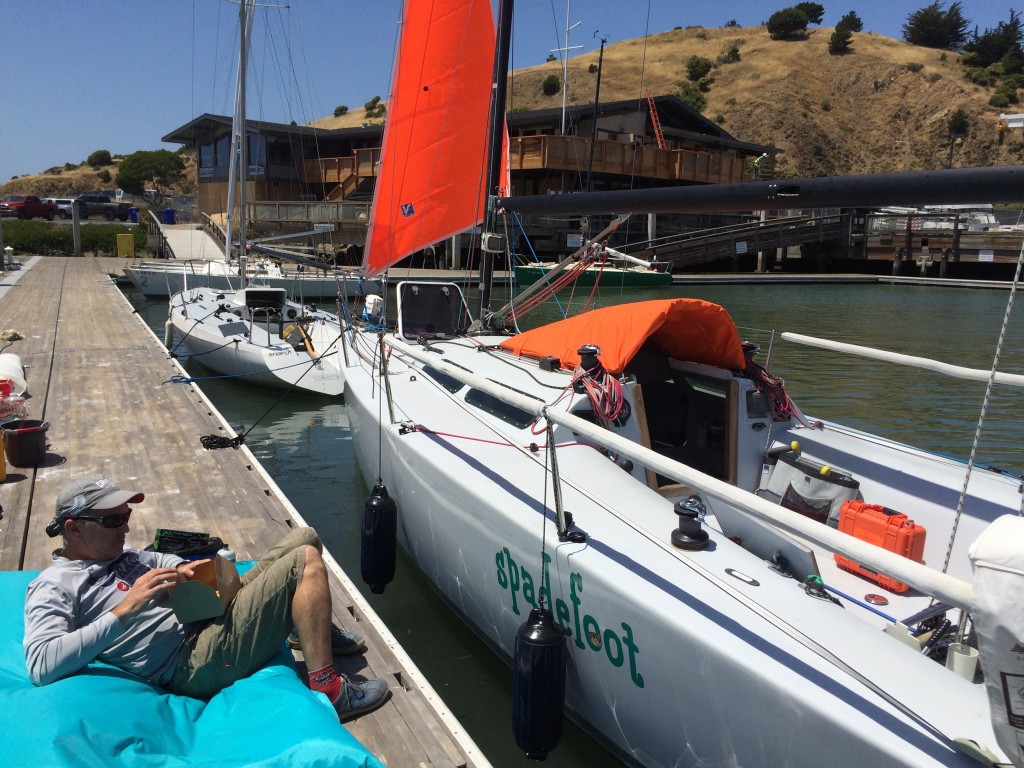
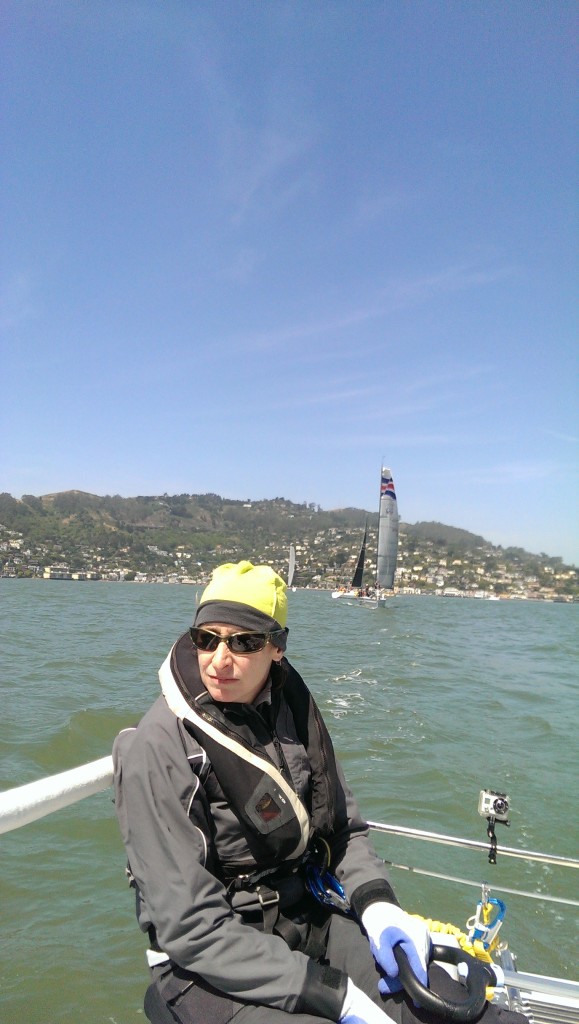
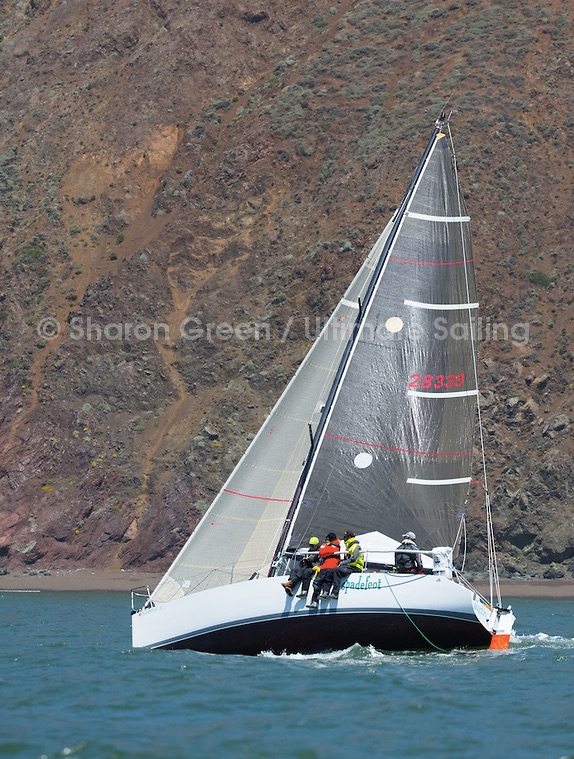
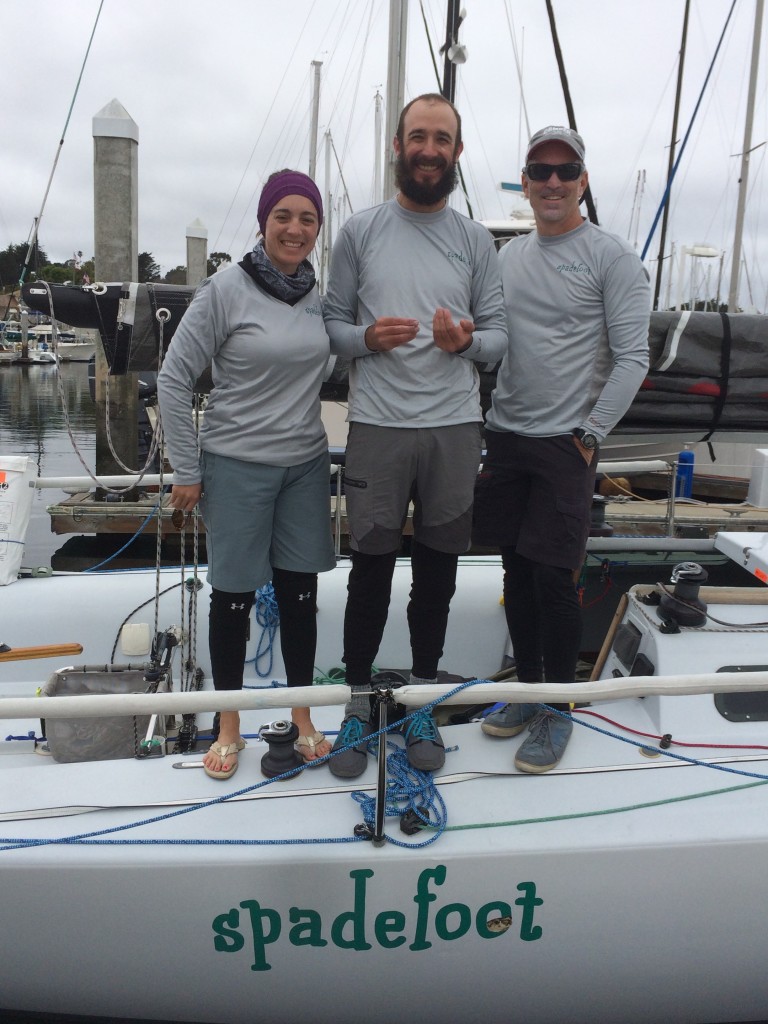
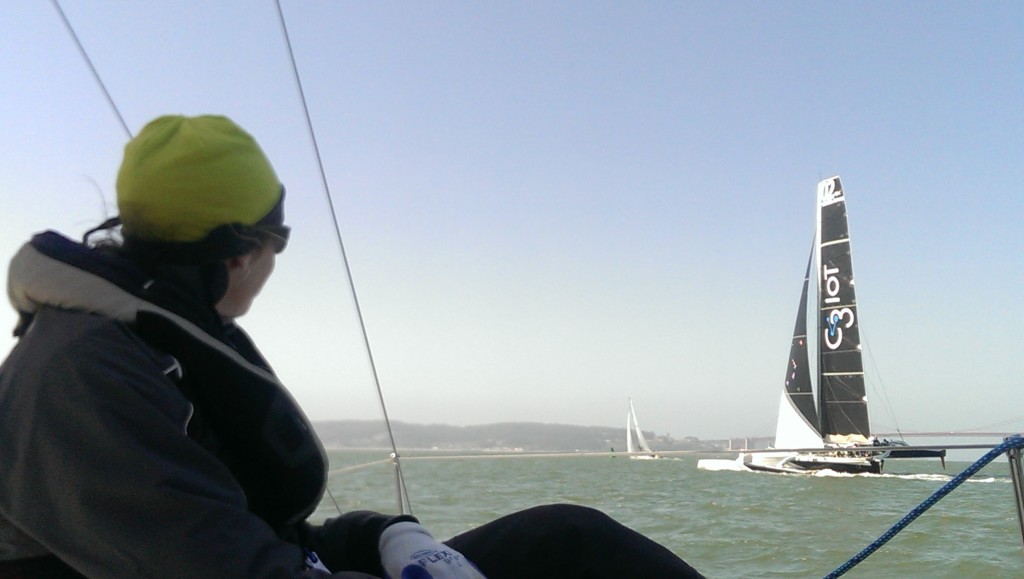
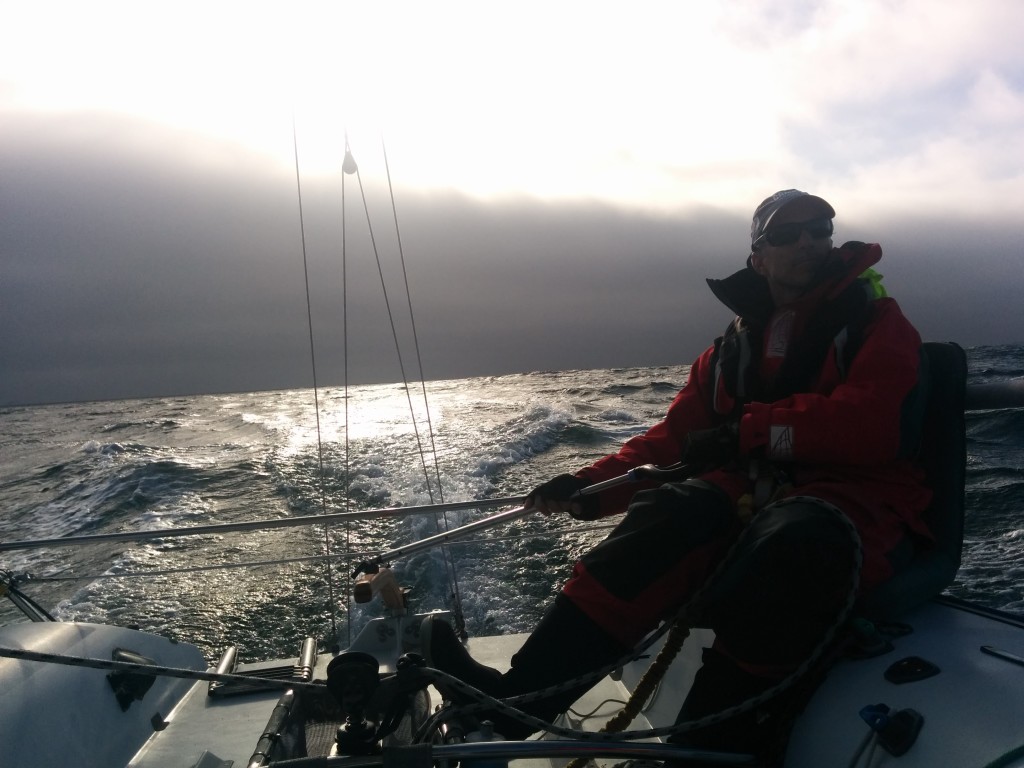
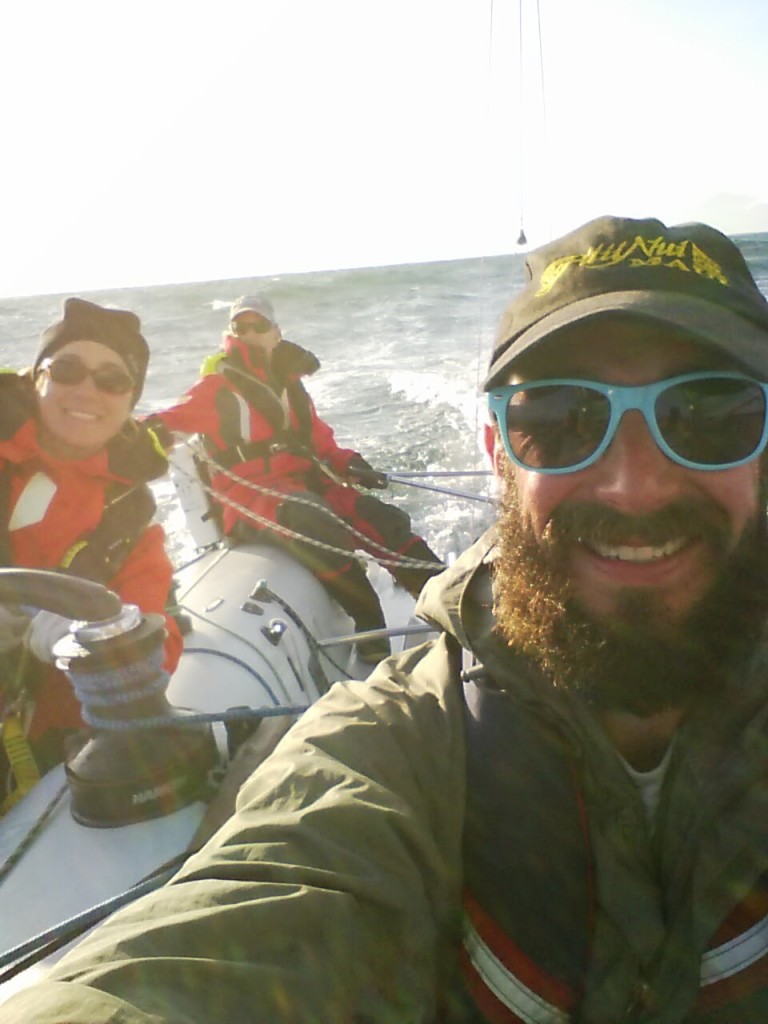

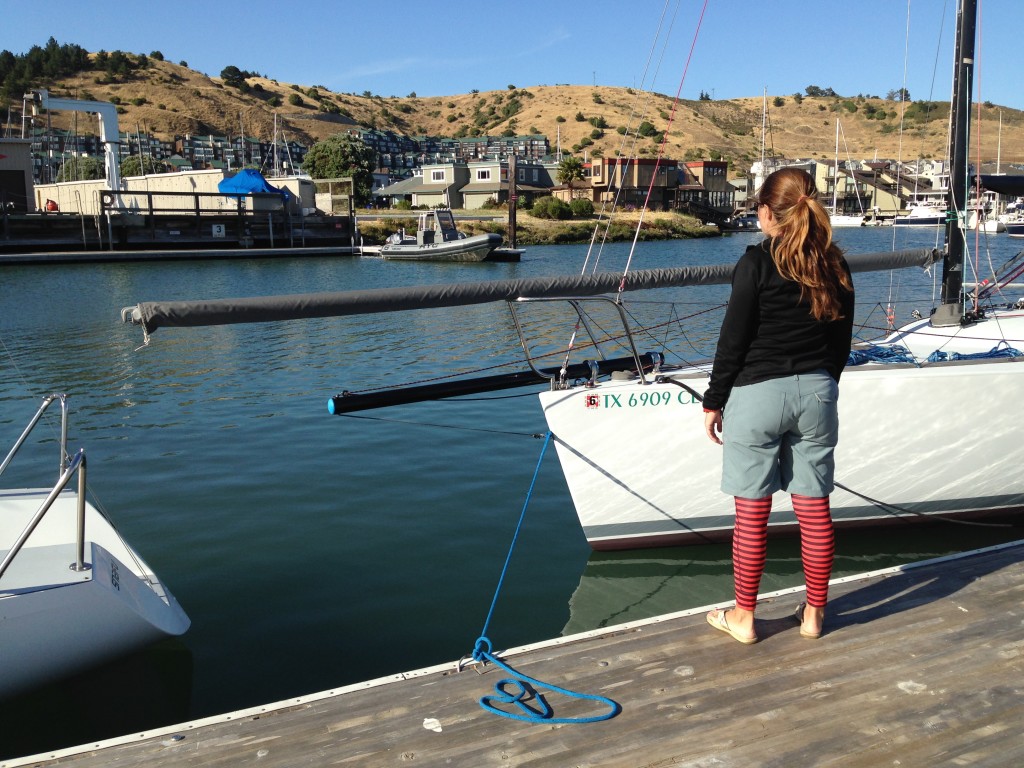
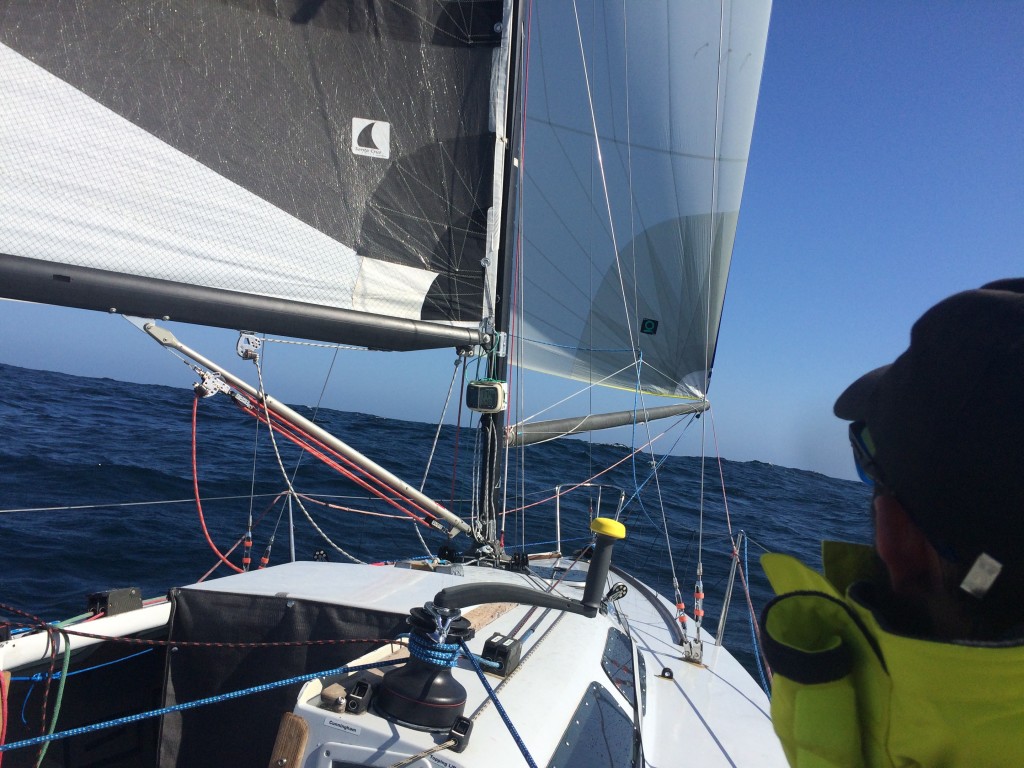
Leave a Reply